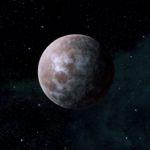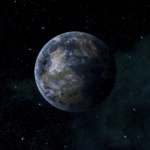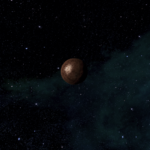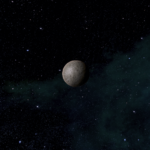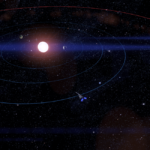System Specs:
- Stellar Mass: _ Sol Masses
- Stellar Class: _
- Luminosity: _ Sol
- Planets: 4
- Moons: 0
- Asteroid Belts: 1
- Asteroids: 1
- Objects: 3
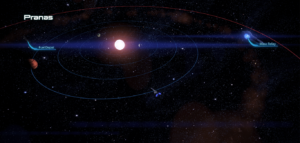
–
Planets Directory:
- Saradril
- Sur’Kesh
- Dragel
- Halegeuse
–
Saradril:
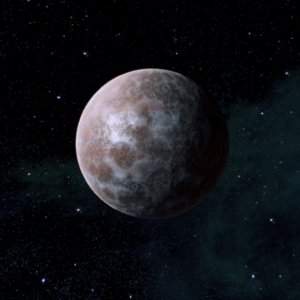
- Orbital Distance: 0.6 AU
- Orbital Period: 0.5 Earth-years
- Keplerian Ratio: 0.864
- Radius: 5,243 km
- Day Length: 22.2 Earth-hours
- Atmospheric Pressure: 8.45 atm
- Surface Temp: 325 °C
- Surface Gravity: 0.71 g
- Mass: 0.476 Earth-masses
Sur’Kesh‘s sister planet is in a weak hothouse state, retaining enough carbon dioxide and monoxide to form an atmosphere thicker than a garden world’s but thinner than a true hothouse like Venus. In the early days of salarian space exploration, the species saw mining the planet as an engineering challenge. When the salarians made contact with the asari, the robo-mining industry developed for planets like Saradril quickly became the galactic standard.
The planet is named for the Saradril Clan, specifically the salarian dalatrass Saradril Il Sorason Mal Netya Par Tore Nura, who sponsored the first manned mission to the planet. In antiquity, the planet was named for various gods, as well as the astronomer who first classified it as a planet rather than a star. But Nura’s political machinations won out and the planet now bears her clan’s name on all standard salarian star maps.
–
Sur’Kesh:

- Orbital Distance: 1.1 AU
- Orbital Period: 1.2 Earth-years
- Keplerian Ratio: 0.924
- Radius: 6,709 km
- Day Length: 21.5 Earth-hours
- Atmospheric Pressure: 1.42 atm
- Surface Temp: 25 °C
- Surface Gravity: 0.94 g
- Mass: 1.032 Earth-masses
- Species: Salarian (Sur’Kesh is their homeworld.)
- Capital: Talat
- Population: 10,300,000,000 (1,100,000 in orbital Space stations)
Thesalarianhomeworld has been likened to the jungles ofEarth: pretty to look at, teeming with life, uncomfortable to live in and dangerous to the unwary. The technophilic salarians had significant pollution and waste problems early in the development of their society. They also embraced social solutions just as quickly, and through complex breeding rules,Sur’Keshnow maintains a crowded but sustainable population. The planet tends to be wetter than Earth, and salarian cities spare no expense to collect and provide fresh water, as one might expect from an amphibious species.
Due to Sur’Kesh’s location in the galaxy, far fromdark space, it has yet to be invaded by theReapers. But its rulers are all too aware that they are in the path of attack. Because they could not strike the first blow, as theirmilitary doctrinesuggests, many already consider their forces at a severe disadvantage.
Codex Entry
Alternating between large oceans and landmasses covered in flora, the salarian homeworld, Sur’Kesh, is known for its humid climate and lush vegetation. As with the rainforests that once covered Earth, the planet’s many forests enjoy a rich biodiversity. The salarian desire for intellectual stimulation drove them long ago to explore every aspect of their environment, developing ways to thrive without consequences detrimental to their habitat.
The areas near major cities and industrial centers are meticulously maintained, with an eye towards ensuring that sunlight penetrates to the ground level and that established paths through the jungle are kept clear for travel. Burngrass, a soil-enriching and adaptable weed native to Sur’Kesh, has become a major export because of its value for terraforming.
–
Dragel:

- Orbital Distance: 1.9 AU
- Orbital Period: 2.5 Earth-years
- Keplerian Ratio: 1.097
- Radius: 1,528 km
- Day Length: 60.2 Earth-hours
- Atmospheric Pressure: (trace) atm
- Surface Temp: -37 °C
- Surface Gravity: 0.15 g
- Mass: 0.009 Earth-masses
The tiny rock planet Dragel is notable for its status as a strategic reserve of heavy metals. It has been warmed slightly by a thin atmosphere of nitrogen and carbon monoxide, but otherwise remains hostile to life. In the clandestine fashion typical ofsalarians, a military outpost orbits the planet but does not appear onAlliancestar maps.
LikeSaradril, Dragel is named for the matrilineal clan that sent the first manned mission to the planet’s surface. However, a thriving minority from the Sylar Clan, who sent the first manned mission to orbit the planet, insists to this day that their landing attempt was sabotaged by the Dragels and the planet should bear their name. Relations between the two clans remain tense.
–
Halegeuse:
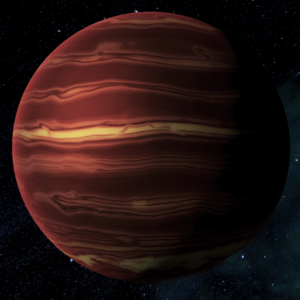
- Orbital Distance: 3.6 AU
- Orbital Period: 6.8 Earth-years
- Keplerian Ratio: 1.009
- Radius: 54,743 km
- Day Length: 16.8 Earth-hours
- Atmospheric Pressure: _ atm
- Surface Temp: _ °C
- Surface Gravity: _ g
- Mass: _ Earth-masses
- Satellites: >16
- Colony/Species: Salarian
- Capital: Aifa (founded: 560 BCE, population: 129,000)
Spacer investors are fond of saying: “You can’t exhaust a gas giant.” But thesalarianshave certainly tried.Halegeuseis home to a thriving community of robo-miners and those who work inhelium-3collection and refinement. More than 16 of Halegeuse’s more metallic moons have been settled.
The giant bears the name of the Halegeuse Corporation, which combined the best efforts of several salarian clans to manufacture the advanced shielding necessary to colonize the planet’s moons. The planet’s magnetosphere retains massive amounts of radioactive ions from Pranash, the system’s star. Because of this, the cities on the moons are subsurface, protected from lethal radiation levels by shielding and thick layers of rock. Halegeuse was bought out centuries ago, but the name endures as a symbol of salarian innovation and cooperation.
–
Paeto:
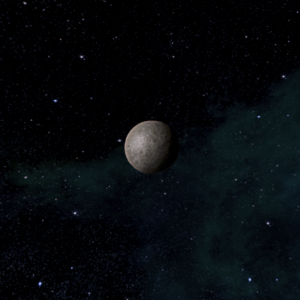
- Orbital Distance: 7.3 AU
- Orbital Period: 19.8 Earth-years
- Keplerian Ratio: _
- Radius: 1,681 km
- Day Length: 29.3 Earth-hours
- Atmospheric Pressure: (trace) atm
- Surface Temp: -154 °C
- Surface Gravity: 0.126 g
- Mass: 0.009 Earth-masses
Paeto, a carbonaceous asteroid, became notable for Element Zero deposits. The deposits, which indicate it was an extrasolar capture, were discovered by the salarians shortly before they found the mass relay in the Pranash [sic] system. Naturally, all element zero was mined out long ago.
The asteroid is named for the clan of Paeto Il Ginon Mal Eneste Dut Solem Ammar, known to humans as Ammar Solem. This shy, retiring eccentric was an undergraduate when more important astrogeologists passed off the first eezo deposits to him. He ran the fateful test that discovered its mass-affecting properties. For three centuries after his death, rival clans fought for credit for the discovery, but the truth won out after a lengthy academic war.
–
video

